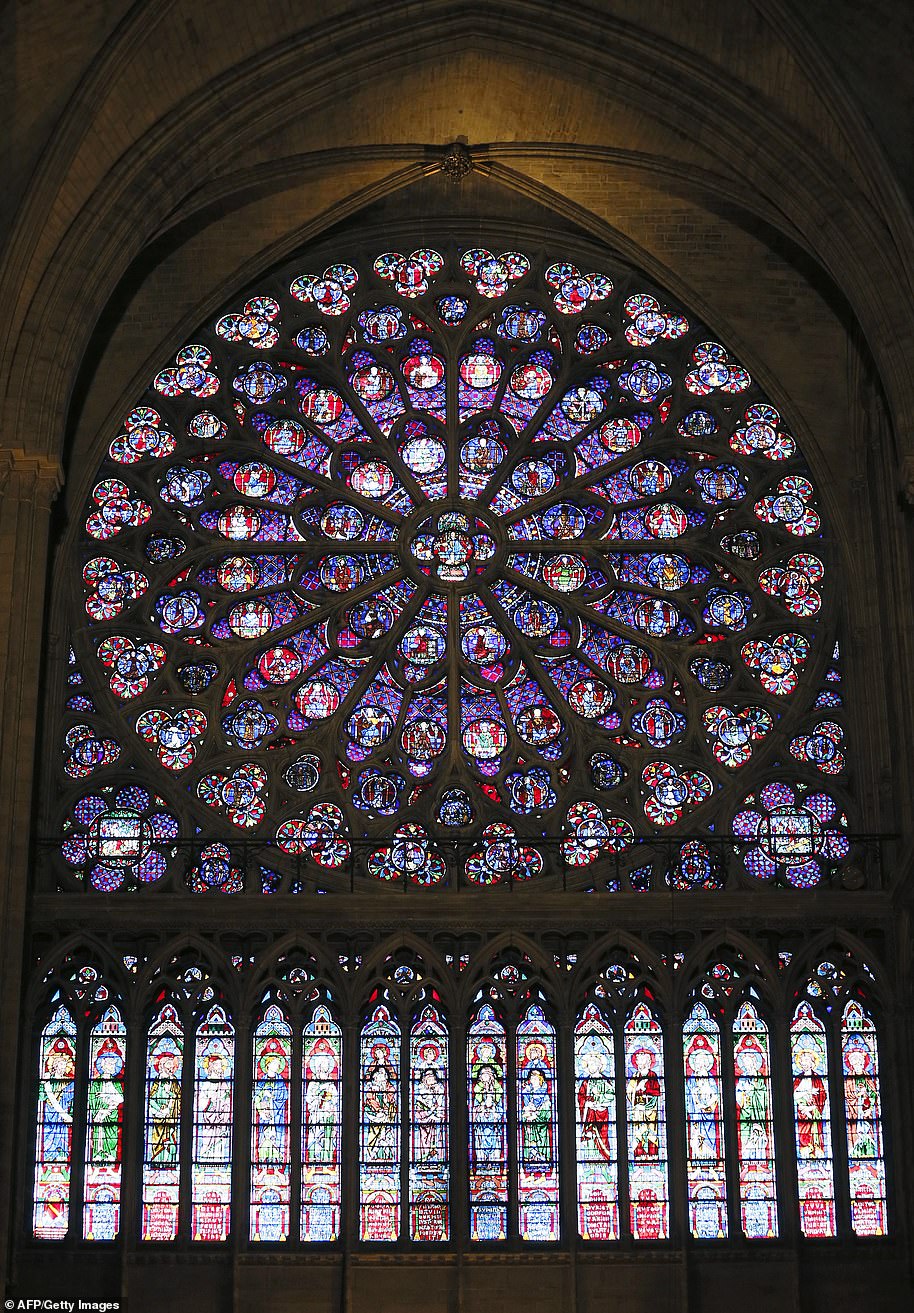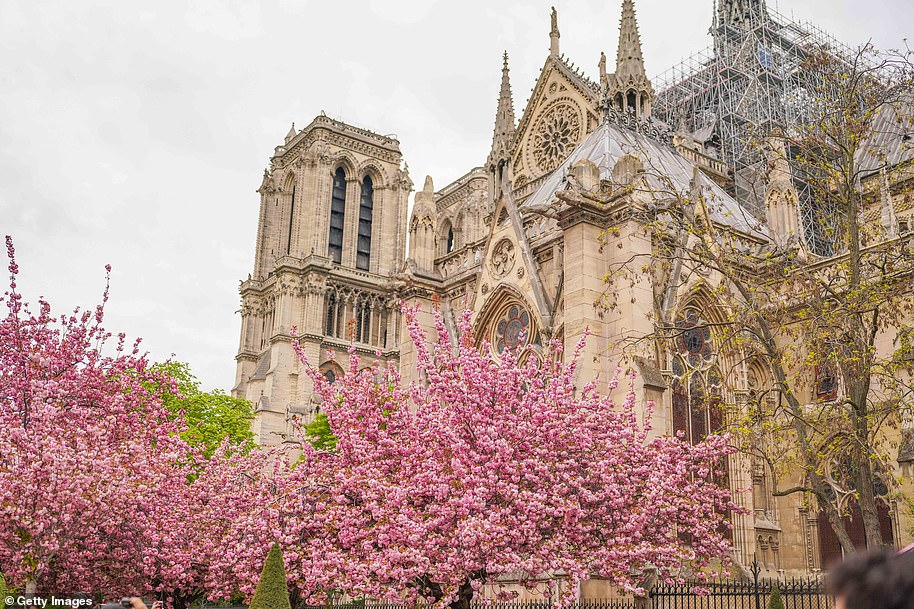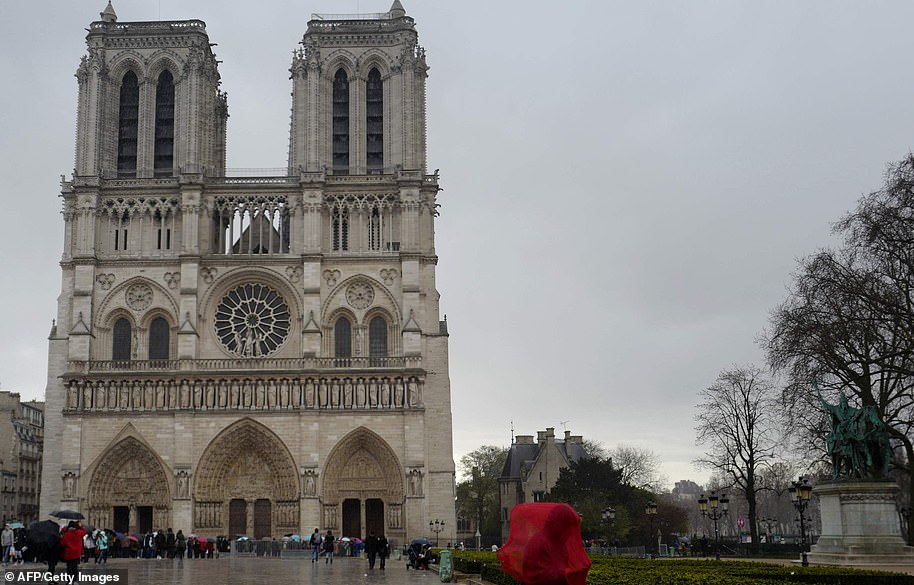See Napoleon’s 1804 coronation in Notre-Dame up close: Moment French emperor crowns his wife Josephine is seen in CGI exhibition at Westminster Abbey which takes viewers back to when iconic cathedral was built in 12th century
Intrigued by stories of Quasimodo, fascinated by the gargoyles, or on a pilgrimage to see the crown of thorns that is said to have rested on the head of Jesus on the cross, more than 13 million people flock every year to see Europe’s most popular historical monument .
The 12th-century Catholic cathedral is a masterpiece of French Gothic design, with a cavernous vaulted ceiling and some of the largest rose windows on the continent.
It is the seat of the Archdiocese of Paris and its 69-meter towers were the tallest buildings in Paris until the completion of the Eiffel Tower in 1889.
It survived partial plunder by 16th-century fanatics and the destruction of many of its treasures during the atheist French Revolution, but remains one of the largest churches in the world and was the scene of Emperor Napoleon’s coronation in 1804.

A view of the medieval stained glass rosace on the south side of Notre-Dame de Paris Cathedral
The foundation stone was laid for Pope Alexander III in 1163 and construction work on the original structure was completed in 1260.
The roof of the nave was built with a new technology: the cross-rib vault. The roof of the nave was supported by crossed ribs that divided each vault into compartments, and the use of four-part rather than six-part rib vaults meant that the roofs were stronger and could be higher.
After the original structure was completed in the mid-13th century – following the dedication of the high altar in 1182 – flying buttresses were invented and added to spread the weight of the mighty vault.
The original spire was built in the 13th century, probably between 1220 and 1230. It was battered, weakened and bent by the wind for five centuries, and was finally removed in 1786.
During a 19th century restoration, after desecration during the Revolution, it was remade with a new version of oak covered with lead. The entire spire weighed 750 tons.
Three relics were kept at the top of the spire; a small piece of the Crown of Thorns, located in the cathedral’s treasury; and relics of Denis and Saint Genevieve, patron saints of Paris. They were placed there in 1935 by Archbishop Verdier to protect the congregation from lightning or other damage.
The Crown of Thorns was one of the great relics of medieval Christianity. It was acquired in Constantinople by Louis IX, King of France, in 1239 for the price of 135,000 livres – almost half of France’s annual expenditure.
The elaborate reliquary housing only one of the thorns is located in the cathedral, having been moved from Saint-Chappelle Church in Paris. The mandrel is mounted on a large sapphire in the center.
The crown itself is also held in the cathedral and is usually on public display on Good Friday, at the end of the week.

Notre-Dame de Paris is home to the relic that is accepted as a cathedral by Catholics around the world. The holy crown of thorns worn by Jesus Christ during the Passion

During the 1790s, when the country was in the grip of the atheist revolution, the cathedral was desecrated and much of its religious iconography was destroyed. It was rededicated to the Cult of Reason and 28 statues of biblical kings – wrongly believed by French monarchs – were beheaded. Even the large bells were almost melted down.
Napoleon returned the cathedral to the Catholic Church and was crowned emperor there in 1804, but by the mid-19th century much of the iconic building had disappeared.
It was not until the publication of Victor Hugo’s novel – The Hunchback of Notre Dame – in 1831 that public interest in the building resurfaced and repair work began.
In 1845 a major restoration project was launched, which took 25 years to complete.
Architects Jean-Baptiste-Antoine Lassus and Eugène Viollet-le-Duc won the commission.
In 1944 the cathedral would be damaged again and during the liberation of Paris, stray bullets caused minor damage to the medieval stained glass.
This would be updated with modern designs.
In 1963, the French Minister of Culture, André Malraux, ordered the cathedral’s facade to be cleaned, removing 800 years of soot and dirt.
Notre Dame has a crypt, the Crypt archéologique de l’île de la Cité, where ancient architectural ruins are stored. They extend from the time of the first settlement in Paris to the present day.

The cathedral has 10 bells, the heaviest bell – known as the boudon and weighing 13 tons – is called Emmanuel and has been rung throughout time to mark many historical events.
At the end of the First and Second World Wars, the bell was rung to mark the end of the conflicts.
It is also called to mark poignant events such as the deaths of French heads of state or after horrific events such as the terrorist attack on the Twin Towers in New York in 2001.
The three stained glass rose windows are the cathedral’s most famous features. They were made between 1225 and 1270 in Gothic style.
Although most of the original glass is long gone, there are still some remains in the southern rose dating from the last quarter of the 12th century.
The rest of the windows were restored in the 18th century.
The southern rose consists of 94 medallions arranged in four concentric circles.
They portray scenes from the life of Christ and those who knew him – with the inner circle showing the 12 apostles, containing 12 medallions.
During the French Revolution, rioters set fire to the archbishop’s residence, which was located to the side of the cathedral, and the south rose was damaged.
One of the cathedral’s first organs was built in 1403 by Friedrich Schambantz, but was replaced in the 18th century before being remade using the pipework of former instruments.
The cathedral also houses a Catholic relic said to be a single thorn from the crown of thorns that Jesus wore on the cross.
